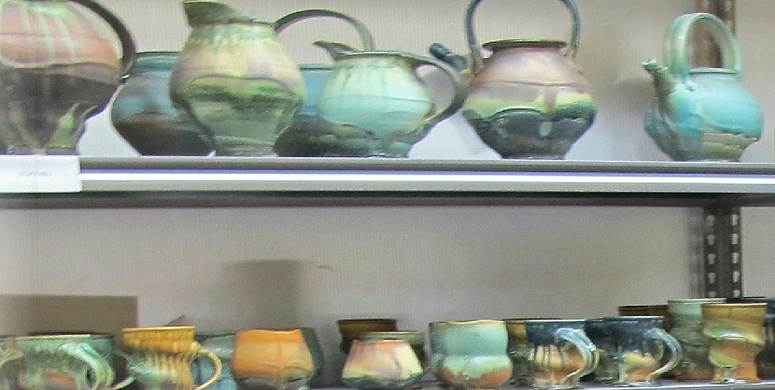There are a wide variety of white clay bodies on the market today. White clays are derived from numerous geographical locations, formulated with variable compositions and mixed together with a wide range of water chemistry. How do these factors play a role in the performance of the clay?
Lack of Plasticity
Some white clay bodies are made up of specific elements that tend to leach alkalies. As the alkalinity (pH level) of the white clay rises, the clay particles begin to deflocculate or reject each other. In turn, the clay becomes “short”.
Creating A Corrosive Environment
Another problem that may occur as the alkalinity of the white clay body rises is the effect it has on aluminum. Under stable pH conditions (4.5 -8.5), aluminum has the ability to form an oxide layer that allows it to be highly resistant to weathering in industrial atmospheres where other metals break down. However, when the pH level rises above stable pH conditions, the oxide layer is unable to renew itself fast enough, causing corrosion or “pitting” of the aluminum.
A Possible Solution
Just add salt! Adding Epsom salt to the white clay body will raise the plasticity as well as eliminate the corrosive environment sometimes created by white clay. How so?
Epsom salt is a acidic solutions that lower the pH level of the clay. As the pH level drops and the clay neutralizes or even becomes slightly acidic, the ions become independently charged. As a result, the clay particles attract one another (flocculates) which increases the plasticity. This also occurs naturally when clay is “aged”. As the clay begins to develop bacteria (mold), the bacteria produce acidic byproducts causing the pH level to drop and the plasticity to rise.
By lowering the alkalinity level of the white clay body, the aluminum now has the ability to maintain a suitable oxide layer which protects the metal from corrosion. Having a better understanding of white clay body and the benefits as a result of maintaining the pH level will go a “long way” in resolving plasticity and corrosion issues.
Below is a general rule of thumb when determining the amount of solution necessary to lower the pH level of white clay bodies. Though the figures may not be the exact measurement, we have yet to find a down-side to a slightly acidic pH level.
Epsom salt: 44 grams of Epsom salt per 25lb bag (moist) clay.
Mix w/warm water to dilute.
Additional Corrosion Possibilities
There are additional corrosion possibilities to be aware of when using white clay bodies in conjunction with an aluminum pugmill, wheel head, etc. It is that of Feldspars. Feldspars has the unique ability to generate an oxide layer similar to aluminum. When a white clay body with high levels of Feldspars is left in a dark, moist pugmill or on an aluminum wheel head for a period of time (as soon as 2-3 weeks) without agitation, the oxide layers of the elements (feldspars and aluminum) can fuse together. In turn, when the clay is removed from the area, dark oxide deposits that has formed on the aluminum are removed leaving a pit on the aluminum. It is for this reason that Peter Pugger has developed a stainless steel pugmill (refer to our line of Stainless Steel SS models here https://peterpugger.com/products/deairing-mixing-pugmills/) with a fully stainless mixing/pugging chamber. Peter Pugger would like to thank Stork Analytical Laboratories, Castco Corporation, and the several ceramicists that provided valuable input. We would like to especially thank Vince Pitelka who spent a considerable amount of time working with us on this project.
For more information on plasticity and corrosion or questions regarding your clay body, please contact Peter Pugger Mfg Inc at: (707) 463-1333 or e-mail: info@peterpugger.com.

